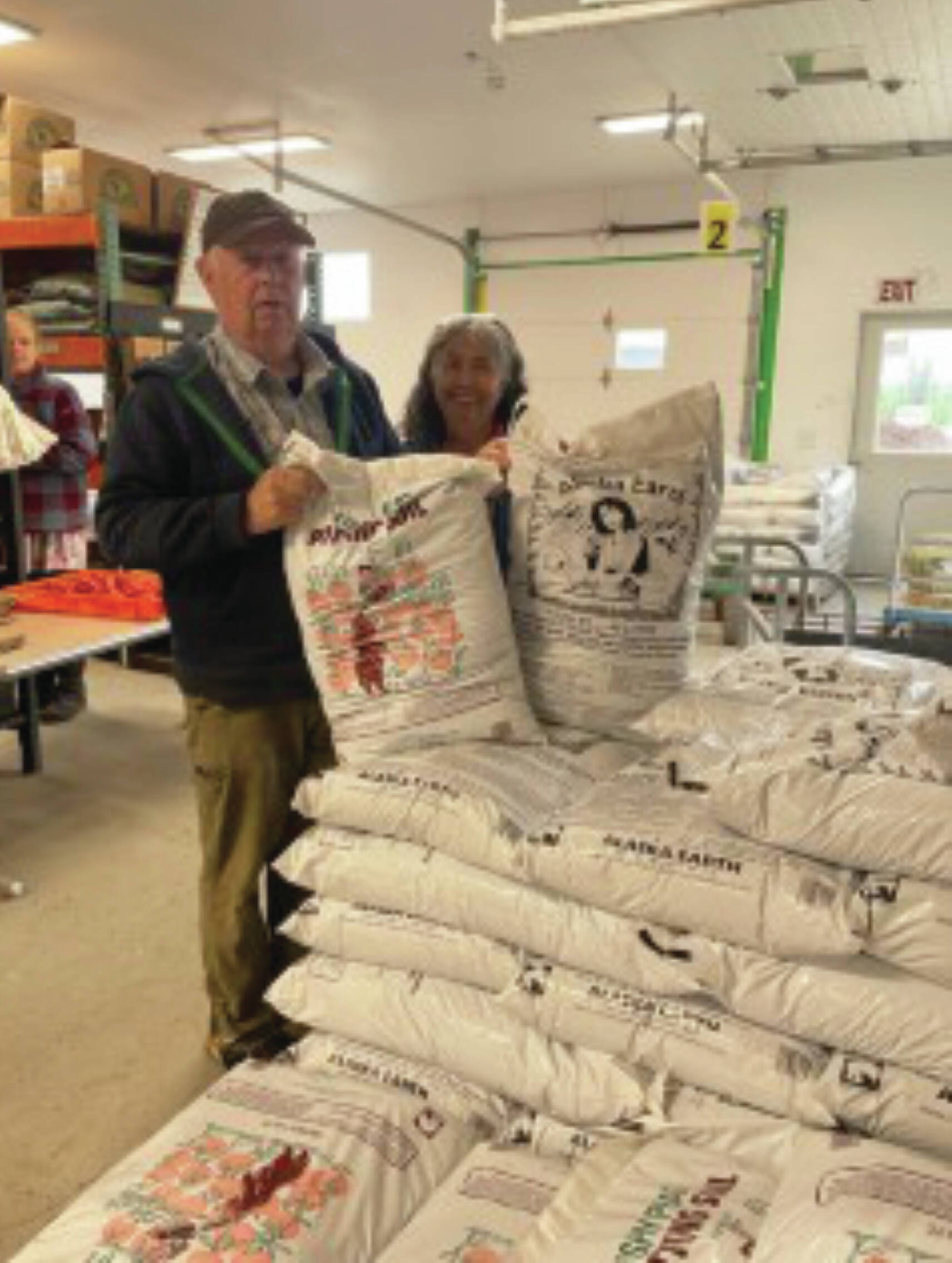In Anchor Point, a local agriculture business has been growing and providing services to the Kenai Peninsula for nearly 50 years.
The Anchor Point Greenhouse, a 10-acre production facility, was established by Al Poindexter on family property in Anchor Point in 1976. The greenhouse provides a variety of locally grown plants, flowers, herbs, eggs, canning and potting supplies, poultry feed and several locally produced products used by gardeners across Alaska and shipped to other states and countries as well. The two most prominent products from the facility are Fishy Peat potting soil and Rhodiola Rosea Tincture, an oil extract used for improving mental clarity and stress relief.
Al Poindexter provided Homer News a tour of the facility to demonstrate where and how the various products are created on-site. Those include several garden beds for vegetables; peony beds; greenhouse for berries and rhubarb; high tunnels for tomatoes and grapes; a root cellar to accommodate the rhodiola roots and other plants and the indoor tincture production room. Another greenhouse is used to house squash, pumpkin and zucchini.
The rhodiola root production feature of the facility is operated by the Kalugin family from Nikolaevsk. Poindexter explained how the roots are cleaned and processed through the equipment on that portion of the facility. After they are cleaned, bulbs are run through an automatic slicer and then placed on screens to dehydrate them in a furnace where they are decreased to about 5% hydration. According to Poindexter, some of the bulbs are shipped to a pharmaceutical company in Washington called Mountain Rose Herbs.
Poindexter also noted that as of 2023, the rhodiola plant was placed on an endangered plant appendix. “Scott Kalugin is now learning how to cultivate the plant and we’re selling it to the pharmaceuticals that previously got it from wild harvest,” Poindexter said. “He’s our best farmer at the greenhouse.”
There is also an experimental greenhouse on-site that houses a row of dill, a row of different kinds of tomatoes, a row of different kind of cucumbers, peas, beans, turnips and carrots. This greenhouse is an unheated facility.
The garlic and onion greenhouse holds just those two products. Poindexter explained the process for garlic harvest. “We put them in the fall, and they’ve been growing all spring and all summer. The bulbs are ready to harvest when they’re pretty much totally brown, and we pull them and we dry them on racks in their greenhouse, and when they’re dry after about two weeks, they’re available for sale in the shop.”
Another shed is specifically dedicated to transplanting. “My best transplanter, Pauline Benson is 88 years old, and she’s faster than anybody else,” Poindexter said.
Most of the employees at the facility are paid hourly, but conditions vary depending on who is using what feature of the facility.
One of the specific products from the facility is the Fishy Peat potting soil. Poindexter described how the formula for the soil was developed by his father, Charles Poindexter. Charles Poindexter was an agriculture teacher because he had two years of agriculture training at the Texas A&M University.
“He started getting the kids to experiment with fish waste. He was concerned about all the fish waste that was being generated in the community and he wanted to find a way to utilize it. The students started composting local fish and seaweed. And he worked for about six or seven years to finalize a soil formula,” Poindexter said.
Then, he started selling it in small quantities. Eventually, people growing marijuana found the soil formula grew marijuana really well, and that launched the Fishy Pete product, Poindexter said. The potting soil is all processed and bagged on-site.
Poindexter said in the past the fish product came directly from facilities on the Homer Spit but they found they couldn’t compost it quickly enough and if the product rotted, it drew too many flies and maggots. The greenhouse now purchases a dried fish waste from a company in Kodiak.
The peat for the product is harvested by contract from local wetlands when it’s frozen in February. Poindexter said that peat is a natural product that is plentiful in Alaska but many other states and countries are in steep decline due to horticulture production for soil improvement over the past century “and now the world supply is starting to diminish,” he said.
The final feature of the facility tour was the rhodiola tincture processing room. Maray Madsen is the employee responsible for the tincture process. Poindexter explains that similar products “have been used for centuries for endurance, mental alertness, mental focus and anxiety relief.” The Anchor Point product is sold at the greenhouse, at businesses in Homer, across Alaska as well as other states and countries. More information about the product, its purposes and where it can be purchased is available at akroseroot.com.
Poindexter explained that all the employees at the facility have their own specific tasks and that he “just orchestrates” the whole thing. Recently, his nephew Trapper Poindexter has been in charge of most of the mechanical features of the facility and will take over the Fishy Peat production as a third-generation employee.
The Anchor Point Greenhouse is open Monday through Saturday from 10 a.m. to 6 p.m. though hours may change near the end of the summer. The greenhouse also has a Facebook page that provides frequently updated information on when specific vegetables are available for sale.


